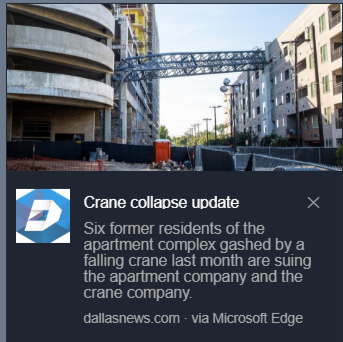Failing forward with audience engagement: Lessons from three newsrooms’ missteps
Ashley Hopko, for API’s Better News,
Montgomery Advertiser reporter Hadley Hitson interviews Equal Justice Initiative executive director Bryan Stevenson at the EJI offices in Montgomery, Ala. (Mickey Welsh/Montgomery Advertiser)
Mistakes lead to progress when it comes to engagement — just ask your peers at the Montgomery Advertiser, Dallas Morning News and Substantial Media.This is a series on Better News to a) showcase innovative/experimental ideas that emerge from the Knight-Lenfest Newsroom Initiative and b) share replicable tactics that benefit the news industry as a whole.
This “win” features highlights from pieces previously shared on BetterNews.org by alumni of the Table Stakes Local News Transformation Program.
In the Better News community, lessons about audience and subscriber engagement aren’t swept under the rug or frowned upon — they’re celebrated and studied.
In entrepreneurial Silicon Valley and beyond, there’s a saying that people should always be “failing forward” — learning from missteps. Top innovators in the local news community shared lessons through a series of case studies previously published by Better News.
Here are three key pieces of advice inspired by subscriber engagement attempts that didn’t go as planned the first time around:

Montgomery Advertiser reporter Hadley Hitson covered the march across the Edmund Pettus Bridge in Selma, Ala., on the 58th anniversary of Bloody Sunday. (Mickey Welsh/Montgomery Advertiser)
Be patient and don’t underestimate the importance of connecting with community leaders
Reflecting on a history of some extremely racist coverage and ads around the Montgomery Advertiser’s founding in 1829, the Alabama publication (now run by Gannett) began re-engaging readers and boosting revenue to support coverage for those living in areas previously considered a news desert. Instead of producing content about the Black Belt, the publication produced coverage more relevant to the community. The editorial team boosted readership by building trust through networking with local changemakers and showing up to listen, rather than jumping into story coverage.
The team connected with people who were already trusted and respected by community members. “The ways we found those community leaders were varied, but in rural Alabama, churches and nonprofits were a good place to start,” said the team in a previous piece published on Better News. “Typically, they either are the right people to be talking to or they’re nice enough to point you in the right direction.”
More skeptical and distrusting community members also followed suit and engaged with reporters, both as sources and readers.
It’s also important to note that though the Montgomery Advertiser was working to gain subscribers, they decided to publish all rural Black Belt stories as metered content instead of behind a subscriber-only paywall. Once they did that, readership jumped, and subscriber numbers in the eight targeted rural counties increased — by 200%.

Think fast and respond quickly to community input
The Dallas Morning News experimented with browser push notifications as a way to increase audience engagement and readership. Upon first launch, the 2019 experiment led to a 4% increase in overall page views, and ultimately around 800,000 people subscribed to the push notifications, which outperformed audience engagement from social media sites like Facebook and Twitter. The push notifications also spurred hundreds of digital subscriptions.
One major issue with the endeavor was the negative reader response from those who found it difficult or impossible to unsubscribe from the push notifications. Other readers found that there were too many notifications being sent. The publication had to quickly boost its customer service response and train the team on how to walk people through push notification management.
The editorial team also discovered that headlines needed to be shortened, so they could fit on the small pop-up views.
As the team got more savvy and started segmenting notifications to specific readers, the engagement statistics jumped. However, the segmenting process was inefficient and people became frustrated after receiving repeat notifications.

Greg Hedgepeth, president and CEO of Substantial Media LLC, talks with other local entrepreneurs at a Black-owned co-working space in downtown Raleigh. (Jonathan Leach/Substantial)
Seek like-minded community partners
Substantial Media, a subscription-based platform in North Carolina, experienced growing pains with sustainable revenue generation. Substantial focuses on positive stories and advocacy efforts within the Black community, and communicating the platform’s value and tone was critical in forming partnerships and securing funding through brand alignment.
Substantial’s niche focus areas fill coverage gaps by focusing on Black people, their businesses and the community, ultimately helping the platform recruit readers. The team’s job became more difficult when approaching partners because they had to spend extra time ensuring that the pitch clearly defined why the partner should care about the publication by making “strong business cases.” The publication needed to ensure that partners shared mutual editorial goals with partners.
“We have found it hard at times to sell the importance of unique small-market Black media outlets,” said Greg Hedgepeth, Substantial Media’s founder and CEO, adding that people are much more likely to collaborate when they understand the impact that Substantial has on the surrounding communities.
Publication partners now include the City of Greenville, East Carolina University, ECU Health, the Carolina Small Business Development Fund and The National Institute of Minority Economic Development — all organizations that help to sponsor fundraising events and contribute to content packages.
Substantial has seen a slight increase in premium subscription growth and has also generated about $40,000 in additional revenue through branded content partnerships.
Takeaways
Unexpected challenges may seem frustrating, but there’s nothing wrong with adapting a plan to include lessons. Using a strategic approach, there really are no true “failures” when it comes to experimental programs aimed at boosting audience engagement, serving readers and collaborating with partners.